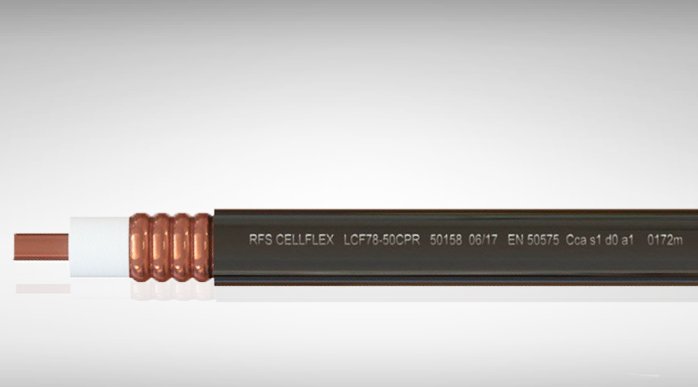The RFS cables meet the requirements of the following European standard for fire performance in cables to comply with Regulation (EU) No 305/2011:
• EN 50575
The EN 50575 standard requires more stringent fire safety measurements and testing than earlier standards for low-smoke, zero-halogen (LSZH) cables. The RFS cables are already designated as LSZH cables and meet three International Electrotechnical Commission (IEC) standards for fire safety in cables:
• IEC 60332: Flame spread
• IEC 60754: Smoke acidity
• IEC 61034: Smoke Emission
RFS’ compliance with the EU regulation reflects the company’s dedication to providing its customers with products that meet international standards for safety and fire resistance. “RFS made it a top priority to meet the new criteria and complete the required certification tests so we can offer a range of CPR-compliant RADIAFLEX and CELLFLEX cables when the EU regulation takes effect,” said Andreas Bergmeister, Product Manager Indoor Solutions, Cables Business Unit, RFS.
Regulation (EU) No 305/2011 takes effect on July 1, 2017. The regulation makes it mandatory for any product marketed as a construction product in the EU to comply with a harmonized set of rules for expressing performance characteristics. The rules make it easier for product purchasers to compare specifications from different manufacturers in different countries, and to ensure that products meet stringent fire safety standards. RFS wireless communications cables that comply with the EU regulation are marked according to their compliance class.
RADIAFLEX and CELLFLEX cables have long provided RFS customers with industry-leading capabilities in wireless infrastructure:
RADIAFLEX is the world‘s leading leaking feeder cable solution. RADIAFLEX cables provide contoured RF coverage, making them a scalable and practical means of tailoring RF coverage in even the most challenging of confined indoor spaces.
CELLFLEX corrugated cables are part of the industry’s most advanced transmission-line family and lead the industry in electrical performance. These foam dielectric cables provide premium attenuation and low loss in a remarkably flexible and high-strength cable.


